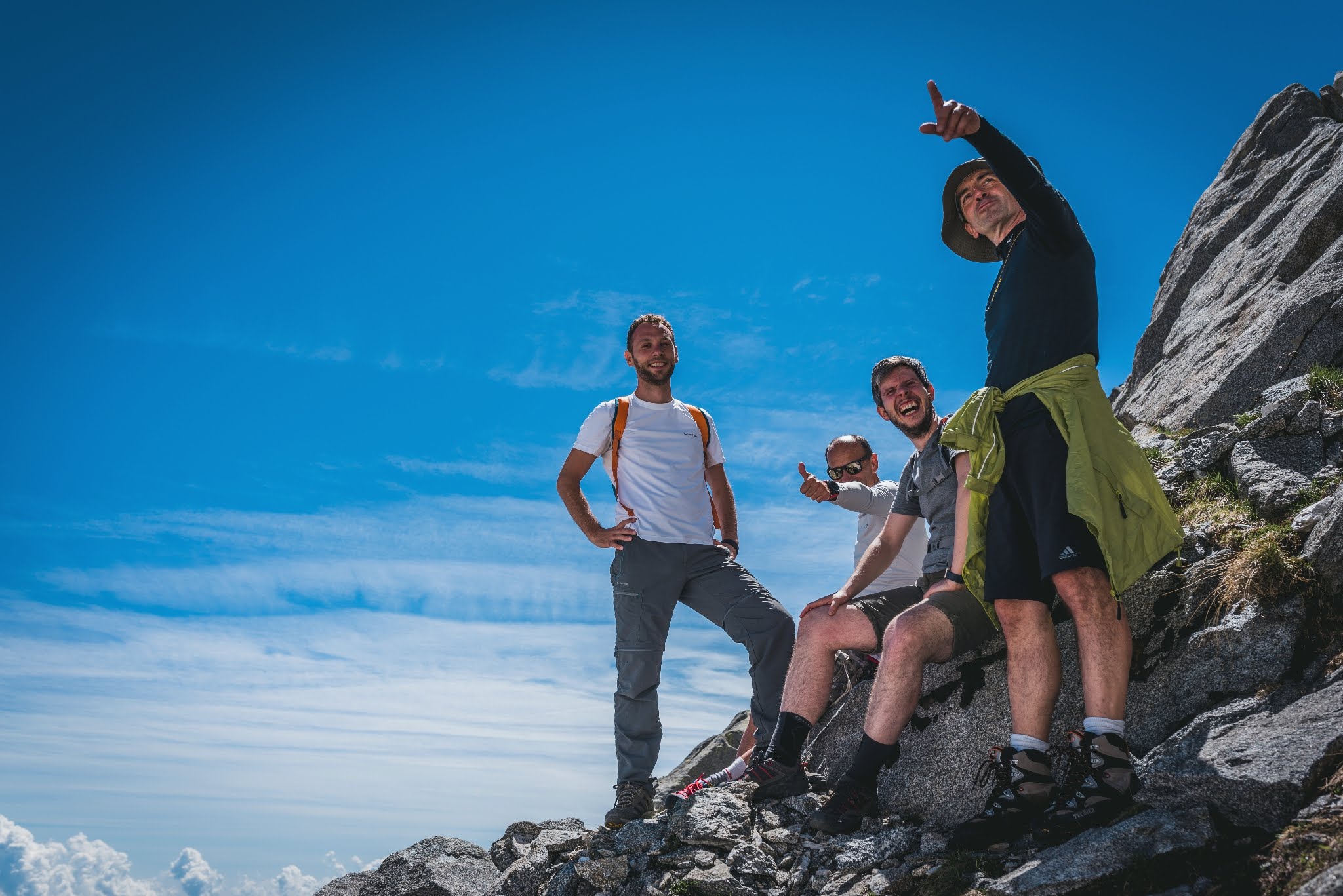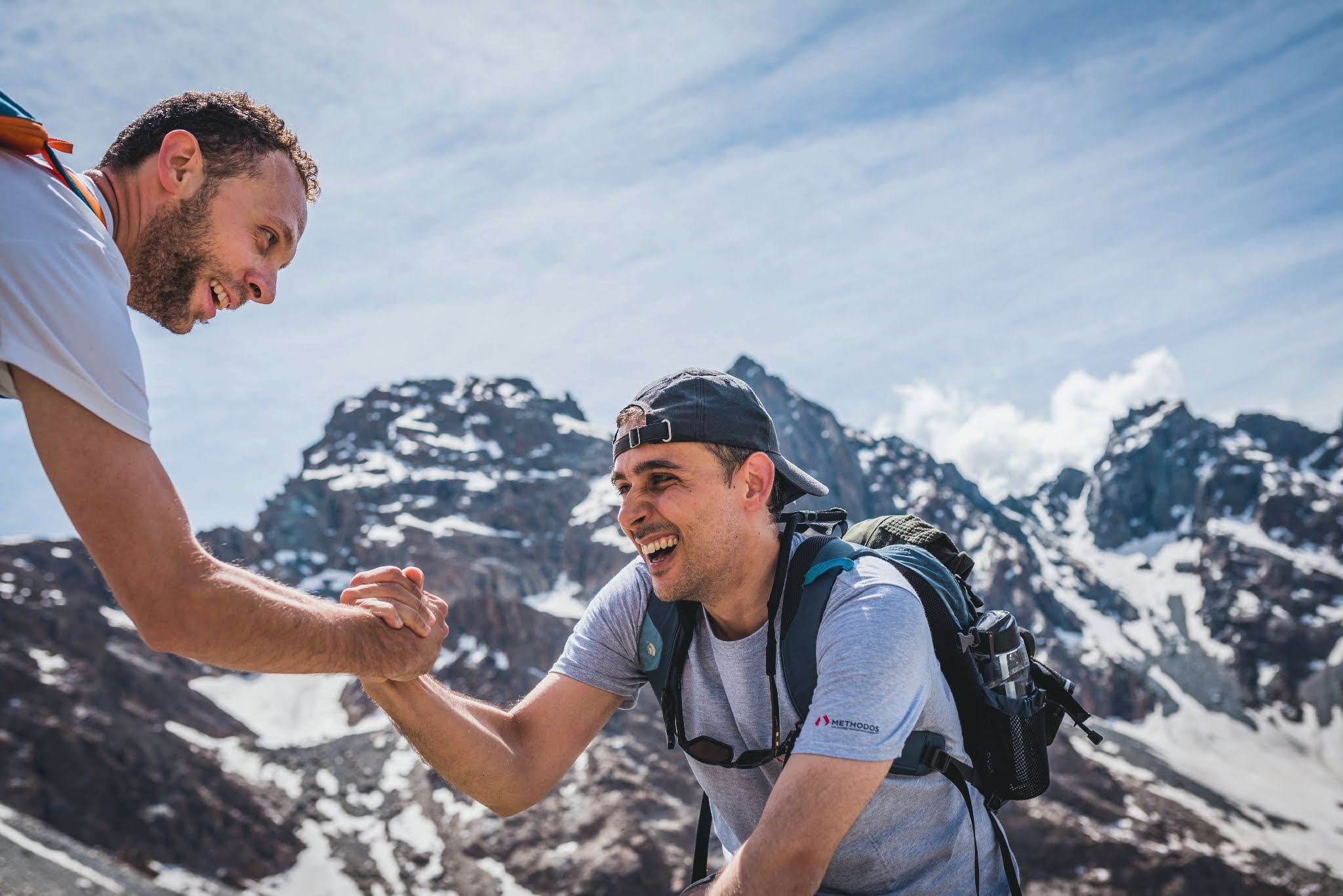
Every face reflects the profile of a mountain. Every backpack holds emotions, experiences, and desires. All different. All moving. All in search of traces of a journey that is still unwritten.
This is the journey of an organisation that, to look inside itself, chose to look out. To become different from itself, it chose to move its own boundaries; to understand the changes happening in others, it chose to go out of its own comfort zone. This is the story of an organisation that deals with change management and that wants to learn lessons about it from its own people.
A few months have passed since the first step of this journey. This is the story of the first lessons. The teacher is the mountain. The class is big. The lesson doesn’t have a name. The help comes from time, which facilitates reflection. Learning is precious.
Change is the verb of the infinite unavoidable. Changing organisations has to do with principle, an initial act and value of intention: “change vision”. It has to do with a challenge posed by each individual to themselves and to the organisation. M4810 started like this.
“They say there’s a thin line between genius and madness. I’m not sure how true it is, but I’ve thought about it.”
“When they proposed the ascent to the top it seemed like a natural choice.”
“I was looking at the others trying to find an emotion that was similar to my own, but the more I tried the more I realised that each of us experienced something that was only ours.”
These are some of the thoughts that were running around our hearts and minds during the 2017 convention upon the unexpected announcement of our CEO: “We’ve thought of launching a challenge to all of us and to our team. Creating and experiencing a great change, the greatest change, on our own skin. Changing ourselves to continue the challenge that we took on in 2014 and to reach our 2020 goals. At 4810 metres high. Climbing the Mont Blanc!”
The challenge was launched. In Sardinia. At Chia Laguna. Sea view.
The first change equation can be summarized like this: vision without execution = hallucination.
How do we fill the space between real and unreal?
Turning vision into execution involves a process that is built on several levels: first – build a plan; second – make it happen; third - learn from the plan and understand what you need to change.
FIRST: BUILD THE PLAN
We’re still inside a meeting room and our team is exchanging looks. The feeling speaks for itself: how do we build this kind of a plan?
Building a good change management plan starts from a clear principle. You can’t build an efficient plan by simply following your instinct, but by choosing the right activities, the right people, at the right time.
How do we know what these activities are, and for whom, and at what time? Starting with the right questions.
Just like this, the working group asks the first good questions: how do we take 40 people on the Mont Blanc? How do we manage the age, training, and motivation differences and stick to this challenge? What are the competences that we’re missing? What are the difficulties that we’ll encounter? Most importantly, what do we want to bring home from all of this?
This problem can’t be solved in 5 minutes. But the questions are right. And answers are encouraged. An efficient plan, in the end, is our forte.

SECOND: MAKE IT HAPPEN
We call preparation for a change change readiness.
How ready are we? What do we think about this challenge? What do we expect to happen? And, most importantly, how do we find out?
The answer in this case is simple, homemade. Just like we do for our clients, we decide to listen to the organization.
So, we launch the first surveys and the first listening sessions.
Even before tying the first shoelace, then, we look at the emotions, the feelings, and the expectations that each person has of this trip. We keep them monitored. For some, the mountains are a new world and the reactions are typical of an organizational change: enthusiasm and adrenaline vs. fear and doubts. For other, the discovery is not about content but about relationships: know the mountains is different from finding yourself with colleagues that don’t and that may travel at a different pace. Then start the visits with doctors and mountain guides.
Yes, because for us change readiness is not just a predisposition to change, but preparation for the change, and that requires knowledge of the context and building the initial competences that are useful for moving within it.
We learn emergency signals and first aid (hoping we’ll never have to use them). We discover that to face this kind of challenge we need to control our health through medical check-ups and evaluations of our physical state so that we can start appropriate training programs and follow the right diets. We start to know the mountains, their language and signals. We discover that the Salewa colours are not only beautiful but also useful. Yellow, red, and blue. We thought it was a matter of style, but we discovered that black doesn’t always go: in the mountains you need to make yourself seen.
We still haven’t left and we’re already a bit dazed – and a bit more equipped.
The first few outings, though, feel like a new discovery. No matter how much you prepare, reality doesn’t fail to surprise.
Not a simple plan realisation, but a step by step application. Each person with their own pace, each with their own backpack. And their own thoughts.
Before leaving, we’re convinced that we’re a great team. Exposed to the wind, the weather, we calibrate between theory and practice.
We follow some of the advice that we’ve been given, and some we forget. The experts set the rhythm, the guides help us, the group leaves together but then unravels. Always.
Nonetheless, we manage to achieve the objectives at each phase: we discover that we can walk for more than 5 hours each time, regardless of the 1000 or more metres of elevation, in the ascent and then in the descent. Under the sun and under the first rains.
Stacking up the kilometres we discover that we’re a group. Even a great group. We start to understand.

THIRD: LEARN FROM THE PLAN AND UNDERSTAND WHAT TO CHANGE
Our mentor is Maurizio Cheli. Job: entrepreneur. He built a company in the aerospace industry. To most he’s known as an astronaut, on board of the Columbia space shuttle – the first Italian in the role of Mission Specialist in 1996. Passions: many. One of these brings him to climb Everest in the spring of 2018, closing a circle that brought him to 2 different perspectives: Everest seen from space, and space seen from Everest.
He had to be our mentor.
The only mistake we can make in life is not learning from our mistakes, he says one day, citing Einstein. Like this, we start thinking about our own.
Have we made them? Yes, of course. Change is made like this: we take steps forward, some to the side, and even some backwards. Like the dashboards of our change projects, we’re monitoring what works and what doesn’t.
At each stage, an internal survey helps us determine the situation.
Just like the reflections at the end of each outing help us understand what to keep doing and what to do differently the next time. And there is always something that changes. The feeling is that each time you’re better, and that at the same time you find new opportunities for improvement. Some say that in the beginning of a process it’s important to make mistakes often so that you can achieve success more quickly.
We question ourselves on the first points that we have to work on. How do manage a group that travels at different speeds? We have to organise ourselves and made sub-teams. How do we avoid dangerous situations? We decide that we can’t walk alone. What do we do if not everyone makes it to the top or doesn’t feel like getting there? The challenge is a big project that requires the contribution of all: not just those that will climb, but also those who will help the climbers in the many things required for this kind of expedition. And so it goes.
We discover that the adhesion to the idea of M4810 increases with every phase. By now, we’re all convinced of the potential of our journey. There are no more doubts.
Every face reflects the profile of a mountain. Every backpack gets filled with emotions, experiences, and desires. All different and all together. All moving. All because the trip is not about the destination, but also, above all, the journey. And this is the kind of philosophy with which people are facing not only M4810, but the business challenge, the challenged posed by the ambitious company vision. Even before rejoicing at the finish line, we’ll enjoy the beauty of the journey, giving it flavour, living in its intensity, gives us the opportunity that we need to be aware of – one that is certainly full of challenges, obstacles, unknown faces, but also of value, of individual and team growth, of discovery and surprise.
All in search of traces of this journey that is still unwritten, both in the mountains and in daily work life.
A few months have passed since our first steps in this journey, and these are the lessons learned. The teacher is the mountain. The class is big. The lesson doesn’t have a name. The help comes from time, which facilitates reflection. Learning is precious.
And it’s just the beginning.





